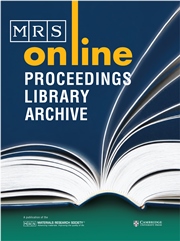No CrossRef data available.
Article contents
Insertion of Inorganic-Biomolecular Nanohybrid into Eucaryotic Cell
Published online by Cambridge University Press: 15 March 2011
Abstract
It has been clearly demonstrated that ATP could be intercalated into inorganic layered double hydroxide (LDH), giving rise to a biomolecular-inorganic nanohybrid with preserving its physico-chemical and biological integrity. It shows a remarkable transfer efficiency of ATP into target cells by alleviating an electrical repulsion at the cell walls due to the neutralization of negative charge of phosphates by positive hydroxide layers. From cellular uptake experiment with laser scanning confocal fluorescence microscopy, it is revealed that the FITC-LDH hybrid is effectively transferred into 293 cells. Such an unique feature of biomolecule-LDH hybrid will open a new field of reserving and delivering genes, drugs and other functional biomolecules.
- Type
- Research Article
- Information
- Copyright
- Copyright © Materials Research Society 2002




